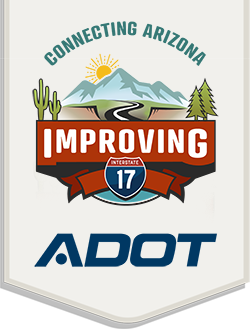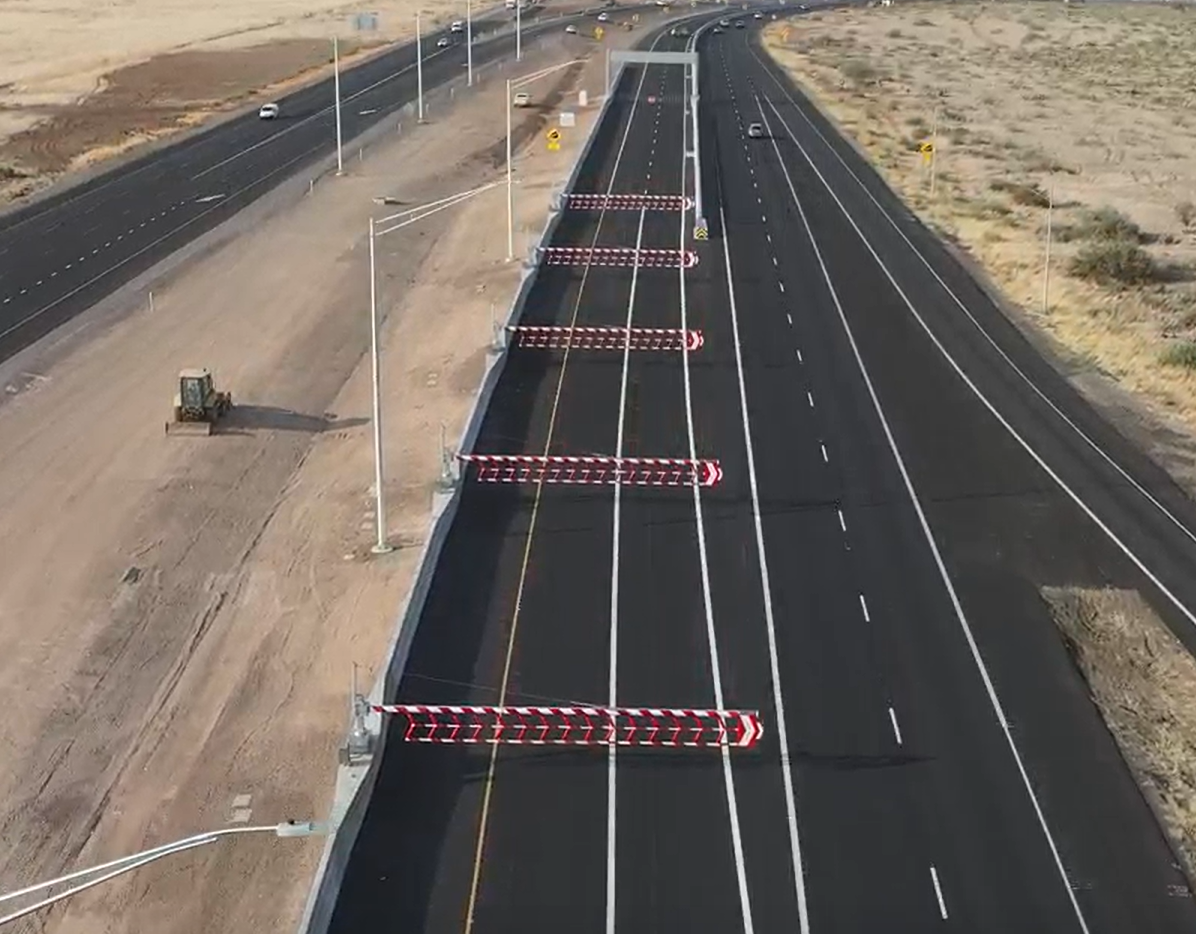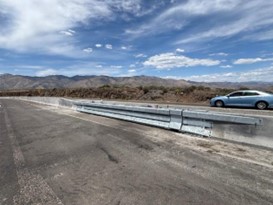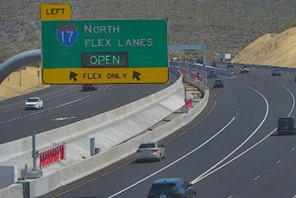Flex Lanes
Understanding Flex Lanes
Flex lanes operate as an additional two-lane roadway that carries one direction of traffic at a time and can alternate between north- and southbound depending on the greatest need due to capacity. The flex lanes are scheduled to open to travelers in Fall 2025.
Watch this video to learn more about the details and operations of this technology.
What to Expect
The flex lanes run adjacent to the existing southbound lanes for approximately eight miles between Black Canyon City and Sunset Point, are an additional two-lane roadway that carries one direction of traffic at a time, and can alternate between north- and southbound directions during peak travel times, or if there is a crash or another emergency situation that causes traffic delays. The flex lanes will be operational seven days a week. The flex lanes will open, as needed, to whichever direction has the heaviest traffic.
Monday - Saturday
Typically, the flex lanes will be open to northbound traffic Monday through Saturday.
Sunday
Typically, the flex lanes will be open to southbound traffic on Sunday.
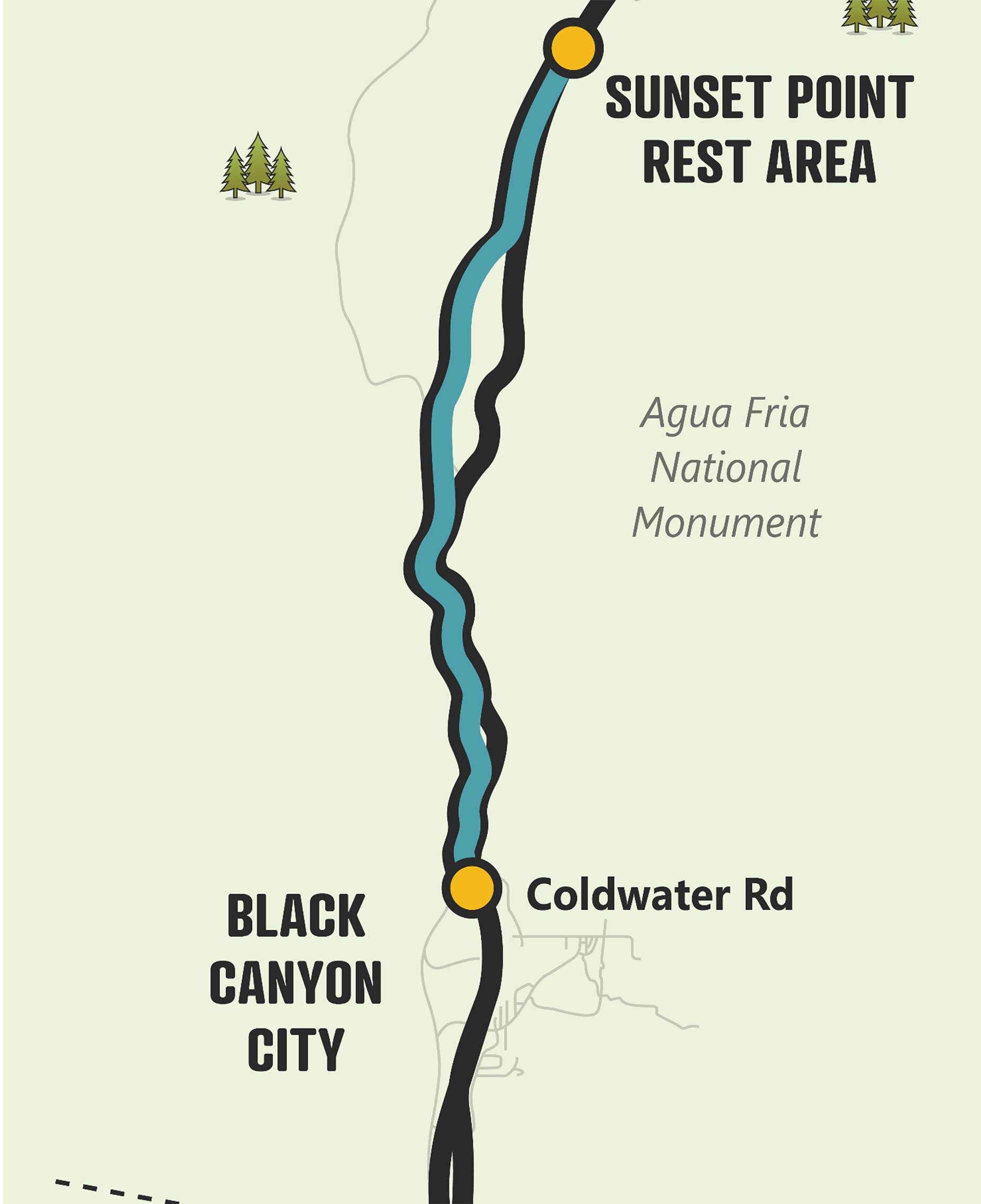
A Safe Solution
The flex lanes are constructed with safety as the top priority. Six key flex lane safety features will be used to prevent vehicles from entering the flex lanes when traffic is flowing in the opposite direction. Prior to a change of direction for the traffic in the flex lanes, all traffic from the current direction will be cleared.
- A Vehicle Arresting Barrier (VAB) will be in the "down" position when the flex lanes are closed to a direction of traffic, preventing vehicles from entering the flex lanes when traffic is flowing in the opposite direction.
- Automated swinging arm gates on both sides of the VAB will extend when the flex lanes are closed to a direction of traffic, blocking the entrances to the lanes and indicating to drivers that the flex lanes are closed in the direction they're traveling.
- Concrete barrier will separate flex lanes from the regular southbound travel lanes.
- Steel gates will be installed in the concrete barrier at four locations throughout the eight miles of flex lanes to allow emergency responders to clear traffic out of the flex lanes and into the general purpose lanes in the event of an incident. The gates are approximately 30 feet long and can be opened in either direction.
- Dynamic Messaging Signs (DMS) will alert drivers whether the flex lanes are open or closed in the direction they're traveling.
- Cameras will allow the ADOT Traffic Operation Center to monitor the lanes and control the gates and barriers remotely.
Flex Lane Frequently Asked Questions
Yes, there will be no vehicle restrictions in the flex lanes. State laws prohibit ADOT from restricting commercial trucks from using the flex lanes. However, signage will recommend that slower-moving vehicles stay in the general purpose I-17 lanes.
No! There will be no tolls to use the flex lanes.
The speed limit in the flex lanes will be 65 mph once they are completed and open to the driving public.
Dynamic messaging signs will alert drivers which direction is in use, and an electronic gate system will control access to the flex lanes.
A specialized, automated net barrier and swing gate system at both ends of the flex lanes will be used to prevent vehicles from entering the flex lanes when traffic is flowing in the opposite direction.
When the flex lanes are closed, the swing gates will be extended and the net barrier will be in the down position, preventing vehicles from entering the flex lanes from the wrong direction.
The ADOT Traffic Operations Center will control the gates and net barriers remotely and will monitor the flex lanes with cameras placed throughout the eight-mile flex lane corridor.
The flex lanes will be available intermittently while construction operations continue. Dynamic Message Signs will alert drivers to the status of the flex lanes.
Back to top



